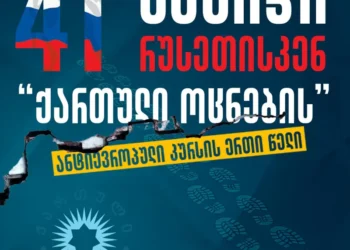Peace in the South Caucasus remains as remote as ever despite the recent efforts made by the US government to bring together the Armenian and Azerbaijani foreign ministers in Washington. The diplomatic attempt follows heavy fighting which took place in April between Armenia and Azerbaijan and led to a number of deaths. The escalation is the first instance since the EU deployed its civilian mission to the border between the two countries and the biggest one since September 2022 when Azerbaijan inflicted extensive damage on the cities deep in the Armenian territory.
The EU urged Baku and Yerevan to de-escalate the situation, but the violence underscored the shortcomings of the Western approach to the crisis and allows Moscow to spin the narrative that peace in the region would remain elusive until Yerevan and Baku toe the Russian line. The Kremlin also took advantage of the occasion to demonstrate that Moscow remains in control of the process by announcing that Baku and Yerevan would also conduct discussions in Moscow in the near future.
Armenia is in a difficult situation. It lost the war in 2020, signed an unfavorable ceasefire agreement with Azerbaijan, and has been withstanding Baku’s assertive moves in the border areas, which has resulted in occasional fighting and casualties on both sides.
Yerevan’s troubles are exacerbated by the fact that Russia, its security benefactor, now has considerably tighter connections with Azerbaijan. Since Russia’s second invasion of Ukraine, the two have maintained effective relations, and signed an extensive cooperation agreement in February 2022. For the moment, the foundation for strong bilateral ties seems solid. Russia needs Azerbaijan as a land route (International North-South Transport Corridor) to access Iran, with whom Moscow has had extensive security and political relations since the war in Ukraine began. Russia cannot also openly criticize Azerbaijan since the latter has strategic relations with Turkey, which occupies a special place in Moscow’s efforts to divide the Western unity from within.
Moreover, there appears to be a genuine antipathy in Moscow for the Armenian political leadership. Since the current prime minister, Nikol Pashinyan, came to power as a result of the peaceful 2018 revolution, relations between the two countries alternated between cooperation and occasional tensions. For instance, Pashinyan declined to sign a joint statement during the CSTO meeting in Yerevan due to a lack of empathy for Armenia’s position at a time when it was under pressure from non-CSTO member Azerbaijan. Later on, Yerevan refused to engage in the CSTO military training, while allowing Brussels to send a civilian mission into Armenia.
For Armenia, Russia’s sometimes overtly anti-Armenian stance reflects a broader stagnation in Moscow’s position across Eurasia. Indeed, the invasion in Ukraine was only a catalyst of much broader problems for Moscow which in reality began long before 2022. The way Russia-led multilateral institutions have approached Armenia’s problems feed into Yerevan’s dissatisfaction. For example, the CSTO has repeatedly ignored Yerevan’s appeals for assistance. Moscow is undoubtedly behind this ambiguity, but other members of the military alliance are likewise somewhat less interested in Armenia’s position. It could even beargued that non-member Azerbaijan has far more partners in the CSTO than Armenia.
Moreover, the EU regards Azerbaijan as a critical energy resource in its efforts to diversify away from geopolitically risky reliance on Russia. Azerbaijan, like Georgia, is an important stop on the Middle Corridor, which connects the Black Sea to Central Asia and then to China. The Middle Corridor is likely to play a significantly larger role in an era when the Russian route has been losing its traditional relevance.
As a result, Armenia is gradually realizing that Russia is no longer as trustful an ally as it has been seen for since the 1990s. Much of these troubles are caused not only by Russia’s ongoing but increasingly unsuccessful war in Ukraine, but also by wider troubles in Russia’s global position. Moreover, one should not discount the changes in Russia’s geopolitical worldview. Despite the fact that it has established an alliance-based multilateral institution such as the CSTO, Moscow does not operate according to alliance logic as it happens in the West, i.e. with NATO.
Moscow’s foreign policy with its neighbors is based on a transactional approach, and, as one might predict, Azerbaijan is regarded as a considerably more significant actor. For the moment, it has a far more important geographic position than Armenia and possesses greater resources. Azerbaijan also has Turkey, and is therefore able to manoeuvre in foreign policy, seeking alternatives to close ties with Russia. The latter therefore operates from the balance of power perspective, which means that in Moscow’s thinking, whatever happens in bilateral ties, Armenia will have no choice but to again follow Russia’s lead.
Analysis by Emil Avdaliani
Emil Avdaliani is a professor of international relations at European University in Tbilisi, Georgia, and a scholar of silk roads.














